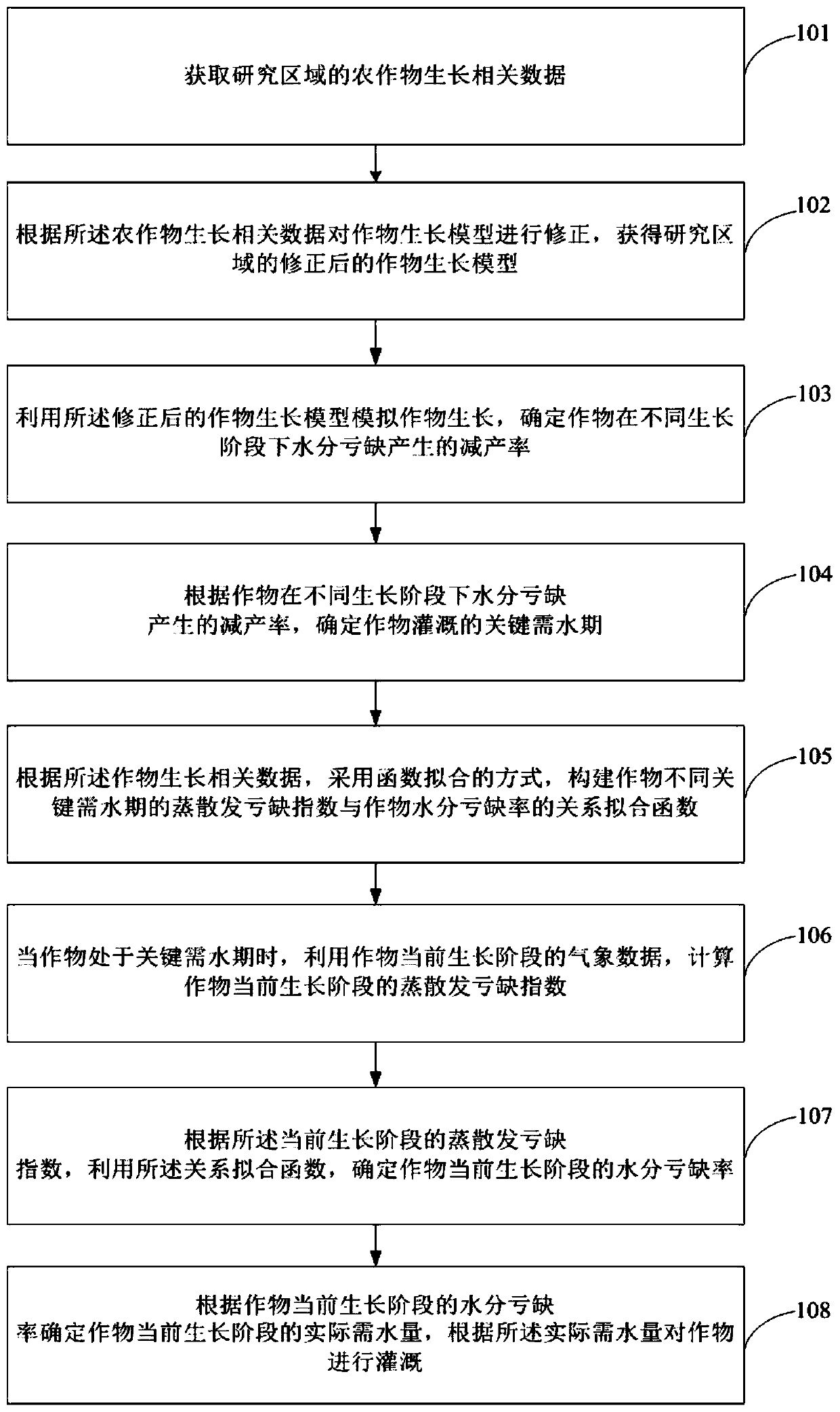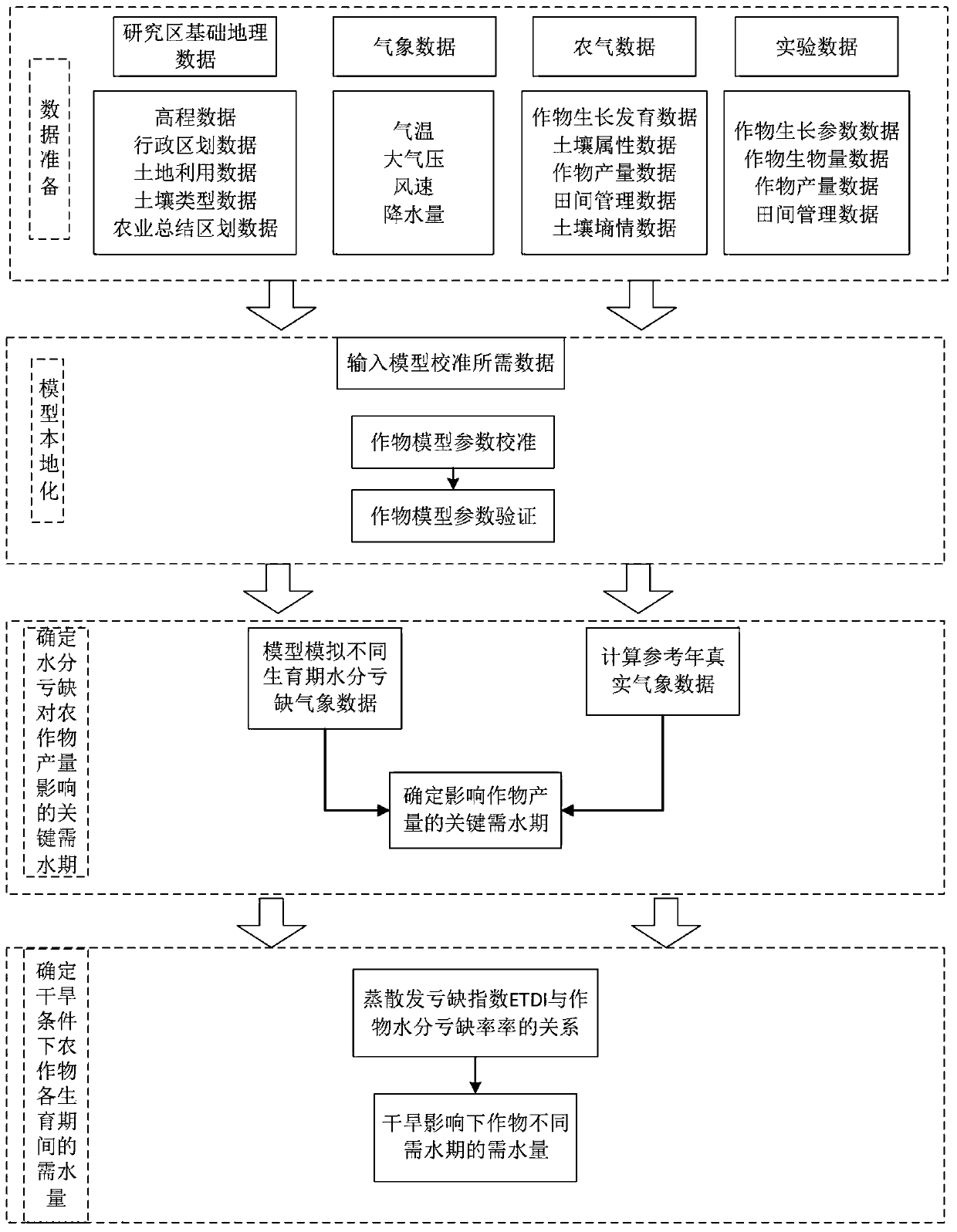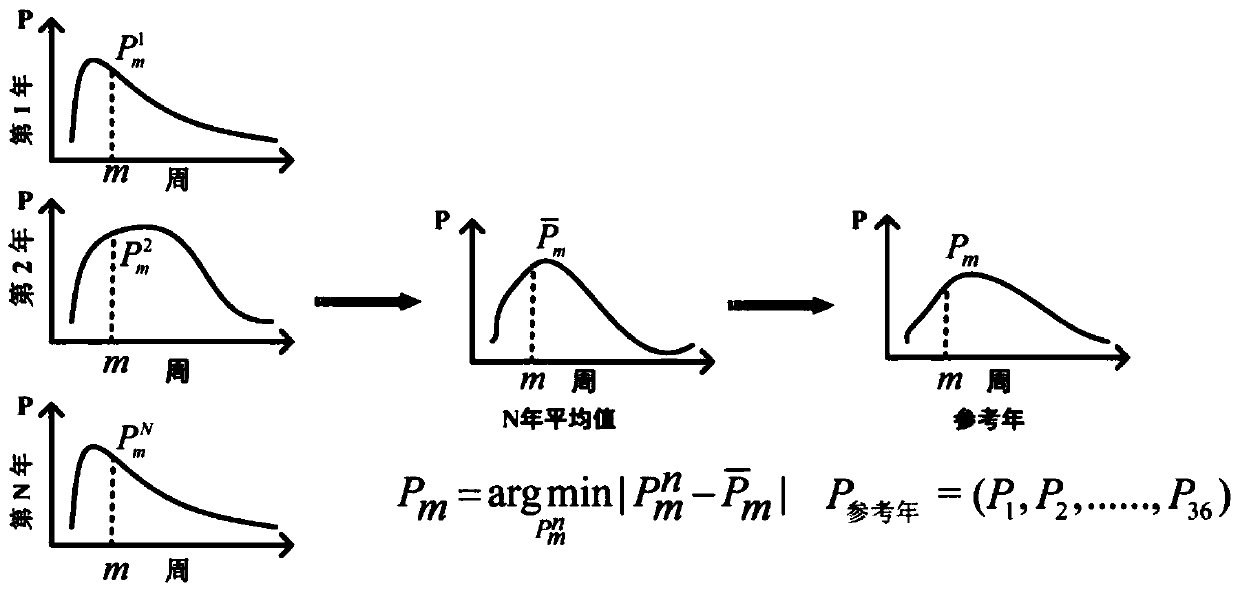Agricultural irrigation control method and system
A control method and agricultural irrigation technology, applied in the field of agricultural irrigation management, can solve the problems of different water sensitivity, difficulty in unified quantification, lack of different regions and long-term data, etc., to achieve the effect of increasing crop yield and improving calculation accuracy
- Summary
- Abstract
- Description
- Claims
- Application Information
AI Technical Summary
Problems solved by technology
Method used
Image
Examples
Embodiment Construction
[0059] The following will clearly and completely describe the technical solutions in the embodiments of the present invention with reference to the accompanying drawings in the embodiments of the present invention. Obviously, the described embodiments are only some, not all, embodiments of the present invention. Based on the embodiments of the present invention, all other embodiments obtained by persons of ordinary skill in the art without making creative efforts belong to the protection scope of the present invention.
[0060] The purpose of the present invention is to provide an agricultural irrigation control method and system to improve the calculation accuracy of water demand period and water demand of crops in different growth stages, and then guide irrigation more scientifically and increase crop yield.
[0061] In order to make the above objects, features and advantages of the present invention more comprehensible, the present invention will be further described in deta...
PUM
 Login to View More
Login to View More Abstract
Description
Claims
Application Information
 Login to View More
Login to View More - R&D
- Intellectual Property
- Life Sciences
- Materials
- Tech Scout
- Unparalleled Data Quality
- Higher Quality Content
- 60% Fewer Hallucinations
Browse by: Latest US Patents, China's latest patents, Technical Efficacy Thesaurus, Application Domain, Technology Topic, Popular Technical Reports.
© 2025 PatSnap. All rights reserved.Legal|Privacy policy|Modern Slavery Act Transparency Statement|Sitemap|About US| Contact US: help@patsnap.com



